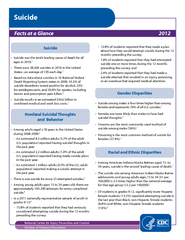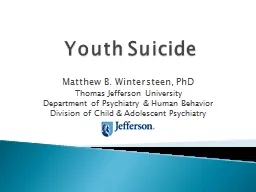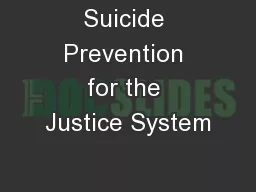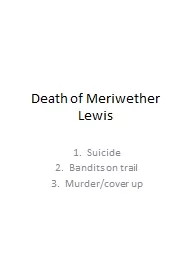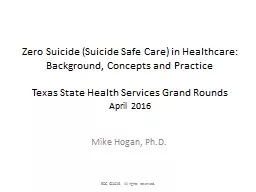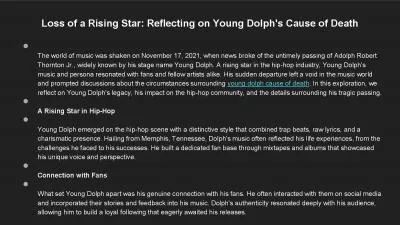PDF-Suicide Suicide was the tenth leading cause of death f
Author : stefany-barnette | Published Date : 2015-05-02
There were 38364 suicides in 2010 in the United Statesan average of 105 each day Based on data about suicides in 16 National Violent Death Reporting System states
Presentation Embed Code
Download Presentation
Download Presentation The PPT/PDF document "Suicide Suicide was the tenth leading ca..." is the property of its rightful owner. Permission is granted to download and print the materials on this website for personal, non-commercial use only, and to display it on your personal computer provided you do not modify the materials and that you retain all copyright notices contained in the materials. By downloading content from our website, you accept the terms of this agreement.
Suicide Suicide was the tenth leading cause of death f: Transcript
Download Rules Of Document
"Suicide Suicide was the tenth leading cause of death f"The content belongs to its owner. You may download and print it for personal use, without modification, and keep all copyright notices. By downloading, you agree to these terms.
Related Documents

